Cycling in Costa Blanca: a cyclist’s guide to Denia and Calpe
Looking for a spring getaway? Mainland Spain's coastline could be the answer...
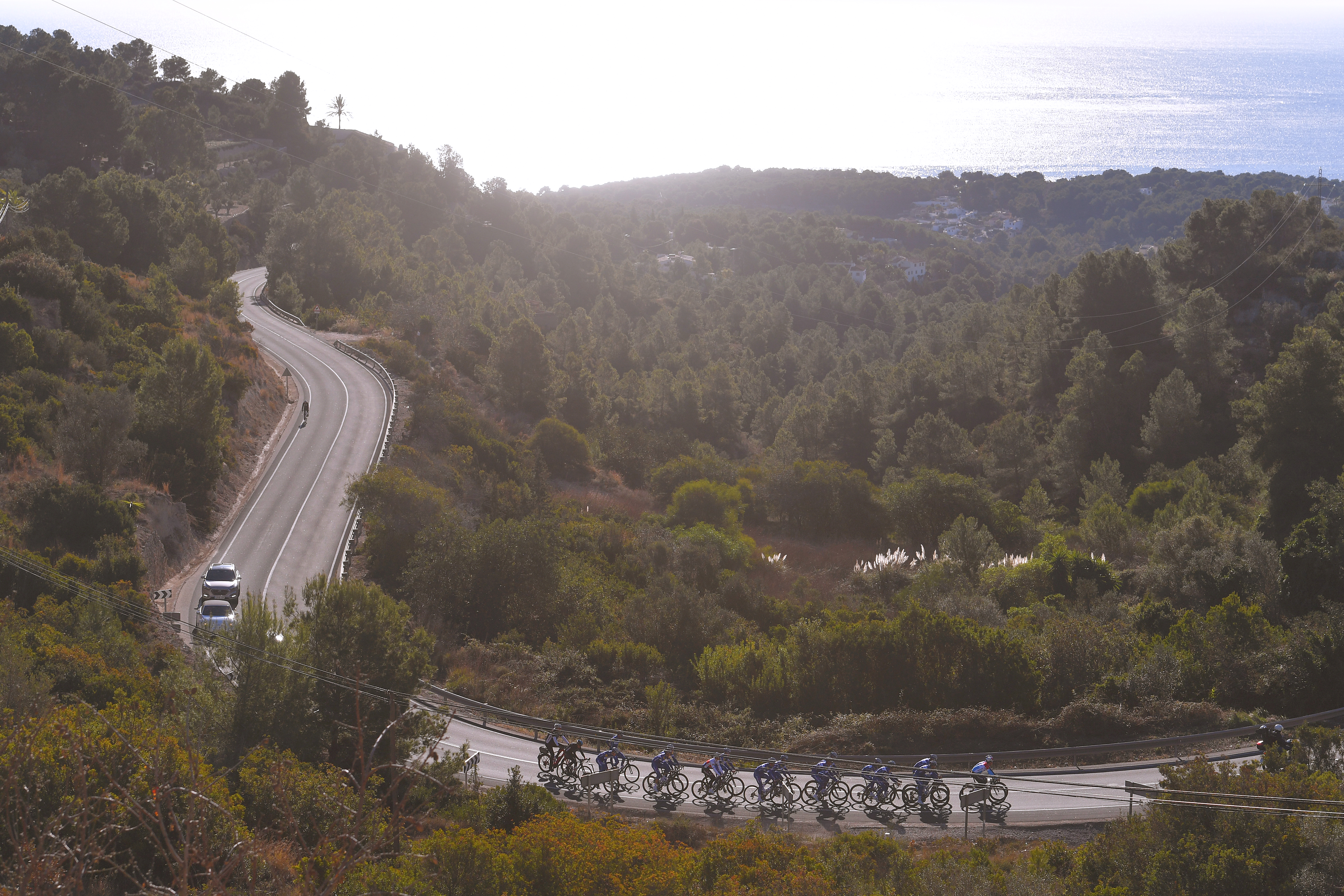
Photo by Tim De Waele/Getty Images

Alicante's Mediterranean coastline, The Costa Blanca, is home to two juggernaut cycling holiday and training camp destinations: Calpe and Denia.
Calpe has been used as a training base for a huge percentage of the pro peloton, with Team Dimension Data, Trek-Segafredo, Team Sky and Sunweb to name a few setting up camp there.
Travel just a little way along the coast and you'll find Denia - a slightly quieter town that sits in the shadow of its 11th century castle.
>>>Best cycling holidays in Spain
There's plenty more places stay in between, as well, and travel is as simple as a flight in to Alicante for most.
Why visit Denia or Calpe?
Travelling cyclists are typically looking for the superlative in two key criteria: climate, and terrain. Local delicacies, cost of living (and eating), and entertainment are all usually secondary.
The latest race content, interviews, features, reviews and expert buying guides, direct to your inbox!
So, it's helpful for the Costa Blanca that in 1986 the World Health Organisation recommended the area as "one of the most equitable in the world," applauding it for being neither too hot nor too cold.
The area boasts an incredible 325 sunny days a year. Cyclists tend to visit in the months between October and May, when max temperatures are around 16°C to 25°C. The months from June to September can reach 30° quite easily and can get a bit hot for bike riding.
Average rainy days vary from one a month mid summer to six in December, with the spring months hovering at around four.
On to the terrain, which boasts the beauty of variability.
There are plenty of long, flat lanes - often accompanied by the zesty scent of orange groves.
These provide an ideal playground for team time trial training - something CCC Team (previously BMC) had been doing a couple of weeks before Cycling Weekly arrived for a week of riding in Spring, leaving behind them evidence in the form of chalk lines drawn on the roads.

Then, of course, there are the climbs. Many of these are fairly steady, from five to six per cent in average gradient and anything from six to 15 kilometres long. These lend themselves perfectly to training efforts at and around functional threshold power.
These also allow for a little energy left in the legs for sprint efforts over the brow, which is perfect even for amateur teams practicing lead outs ahead of the season proper.
There's also some steep climbs which can be used as launch pads for some high torque efforts, if you've got the legs. Examples include the 4km Cumbre del Sol which - depending which way you climb it - averages around 10 per cent and includes ramps over 20 per cent.
In 2015 the climb enlivened the Vuelta a España as Tom Dumoulin went on to take the win whilst riders behind cracked on the slopes, then in 2017 it was Chris Froome who was best over the ramps.
When should you plan your trip?
Temperatures are warm all year, though the most popular time to visit is between January and mid-April.
John Fegan, owner of 'Train in Spain' which organises and guides group training camps and holidays in Denia, told us: "The men's and women's pro teams and continental teams are concentrated here in December and January. From February to April, it is peak time for amateur teams, clubs and groups to visit.
"The only time to really avoid is July to mid-September when the coastal roads get very busy and it is too hot for most people to want to exercise much.
"From October to December temperatures are mostly warm to mild as they are from March to May. January and February can also be mild to warm but occasionally there is a cold snap, or a wet few days."
Where to stay
Denia
Denia, located 90km from Alicante airport, is a coastal town with rows of traditional streets housing restaurants and shops as well as a lively modern Marina and long stretches of sandy beaches.
The area can offer plenty of quiet, flat roads that are ideal for time trial and team time trial training as well as recovery days, plus rolling hills and of course climbs.
Fegan set up Train in Spain, and its popular cake and bike hire provider Cafe Ciclista, to host groups of amateurs as well as pros. Of course he's advocate of the area, over its popular neighbour Calpe.
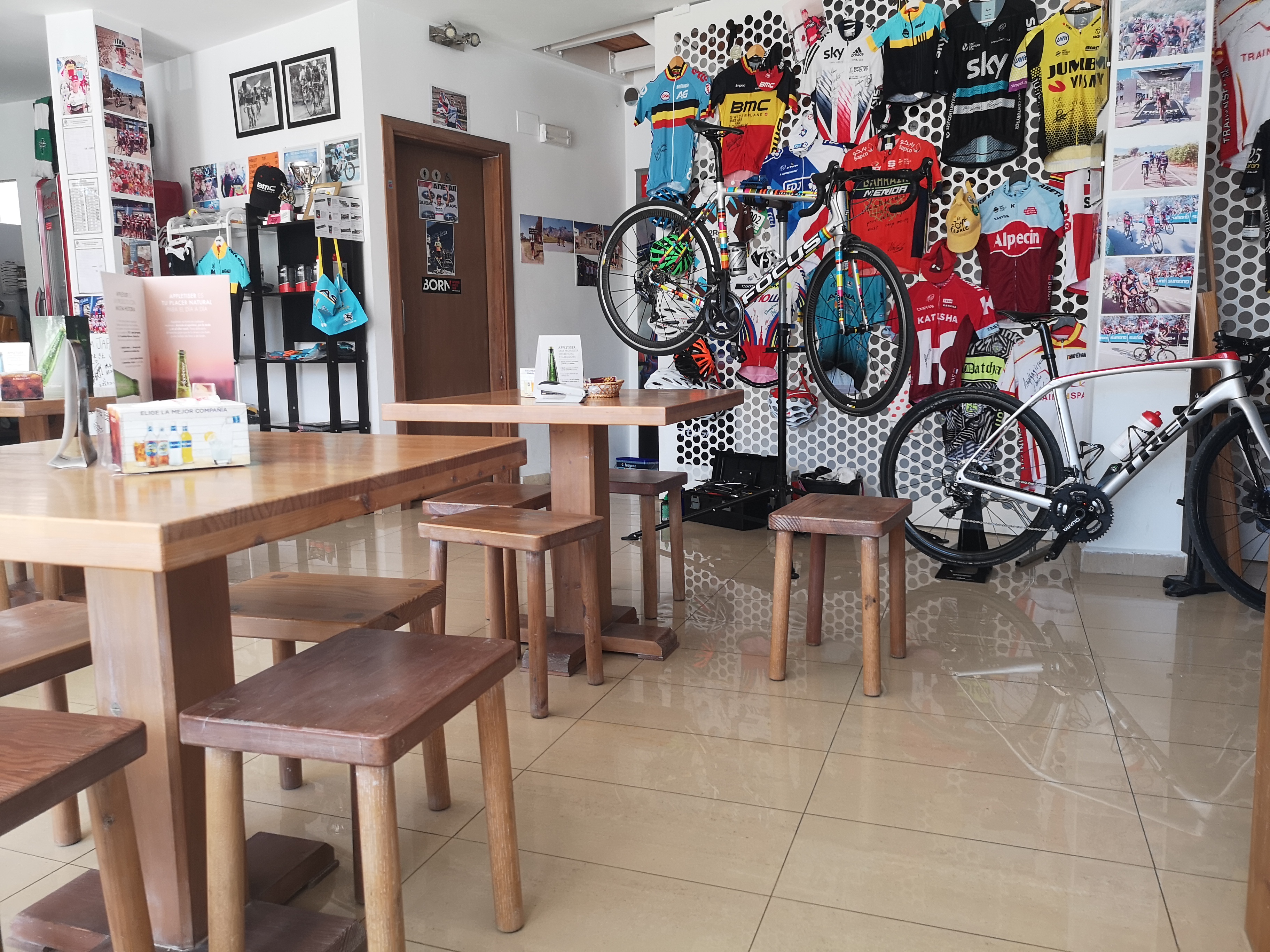
"Most longer rides [from Denia] begin with 20kms or so of easy, flat riding which allows riders to warm up before going into the climbs," he says.
"There is a wider variety of climbs close by and they can be mixed up or combined more than you can do from the Calpe area. Directly inland, as well as to the north west of Denia, it is easy to reach and enjoy the likes of the Vall de Gallinera - and over to Beniares reservoir and Lorcha - Tollos, Vall de Ebo, Mirador de Xap, La Vall de Laguar, Petracos, Coll de Garga.
"More or less straight inland you have, of course, the Coll de Rates and the Sierra de Bernia, which are both approximately 25km from Denia."
Calpe
Just 20km from the party town of Benidorm and 64km from Alicante airport, Calpe promises sandy beaches and plenty of seaside bars for post ride 'recovery drinks' of a hoppy nature.
Mid summer, it's a popular family holiday location so there's plenty of places to eat and drink.
Fegan says: "Calpe is a bit closer to Alicante airport. It enjoys the same weather as Denia and it has closer access to the longer climbs of Tudons and Confrides - if people want to do the longer climbs further south then it is a good place to be. The main disadvantage is that to get out of Calpe and into the hills, you have to cycle on busy roads."
Calpe has traditionally been favoured by pro teams, and Fegan explains: "A key reason the pro teams chose Calpe as their base was due to the fact that next to the lovely and very large 4-star Diamante Hotel, there is a really big car park where they can park their buses and trucks right besides the hotel entrance.
"This is a must-have for them and very few hotels in the other close-by towns can provide it."
Ontinyent
Fancy staying away from the coast?
Ontinyent is nestled within the Vall d'Albaida region, which also contains the Serra Mariola National Park, and the area is home to newly launched cycling holiday company Escapar.cc.
The town is just over an hour from Alicante airport (91 kilometres) and being more inland is greener and more luscious. Temperatures can be a little lower mid summer, with less humidity and you can expect even fewer rainy days too.
Founder David Emery described the inland area as a "goldilocks location," surrounded by a surplus of vineyards as well as having a close proximity to some of the area's tallest mountains and lower levels of traffic and tourism.
"Looking at the regional map of all the named climbs confirms that Alcoy and Ontinyent are blessed with a sheer abundance of climbs, 1000m mountains and an unparallled variety of riding, that includes perhaps the most famous climbs such as the Carresqueta, Port de Tudons and Xorret del Cati," Emery said.
"There are multiple mountain passes straight from the centre town and the riding is brilliant from kilometer zero. On the coast you have have to ride 20 to 30km at the start and end or rides just to get the classic climbs.
"There's also an array of lesser known climbing gems, with alpine like gradients of six to nine per cent, that just don't exist near the coast, where it's often short and very steep or long and steady," he added.
Popular climbs
Coll de Rates
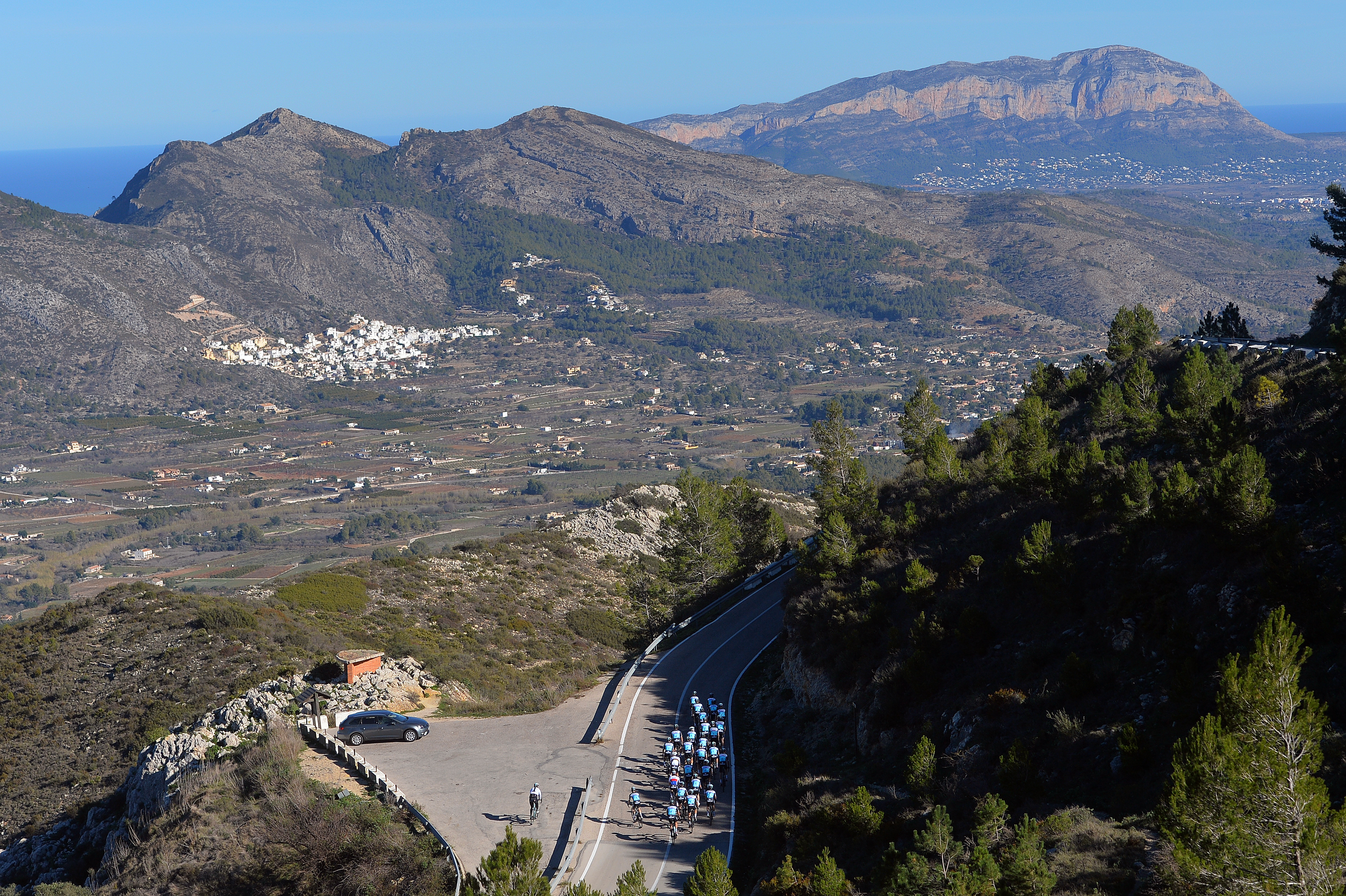
Coll de Rates is the blue ribboned climb of the area. At 6km, with an average gradient of 5 per cent, it's short and shallow enough that it's perfect for FTP type efforts.
Whilst most people will use Strava to time their effort now, there's an old style ticketing system, with a machine at the top and bottom.
The smooth gradient, excellent views and stunning surface makes for a great descent, too - just look out for those riding in the other direction and so 'on the limit' that the white line is all a bit of a blur.
Vall d'Ebo
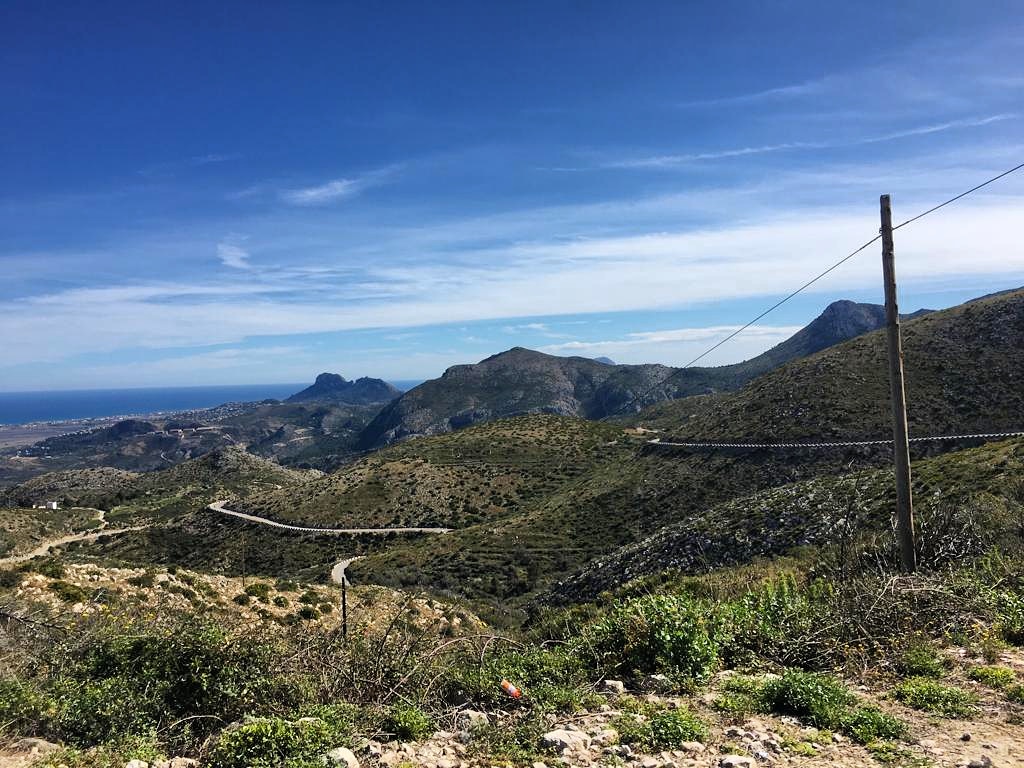
Very much a 'testers climb', the 8km stretch from Pego winds its way to the summit at an average gradient of 6 per cent with no specific ramps to disrupt your flow.
The constant switchbacks provide plenty of opportunity to take in the valley views - or check out the progress of your ride buddies.
Beware - if you climb from Pego and continue on to Tollos after the summit, you'll be greeted with a further 15km of rolling terrain that offers some seriously stinging ramps. It's well worth leaving a little energy in the tank, go too hard on the climb and you might find yourself tempted to get off the bike and call a taxi home.
Cumbre Del Sol

Known for its unrelentingly steep gradient, the Cumbre Del Sol featured in the Vuelta a España in both 2015 and 2017 - with Tom Dumoulin and Chris Froome taking the victory respectively.
There's five routes up, but the option selected by the Spanish race's route planners is 4.1km long, averaging out at 9.1 per cent - with hairpins over 20 per cent.
Overlooking the coast, the views from the top are exquisite - and if you're not tearing yourself apart to reach the summit in the best time possible, the location makes for attractive viewing all the way up.
Vall de Laguar
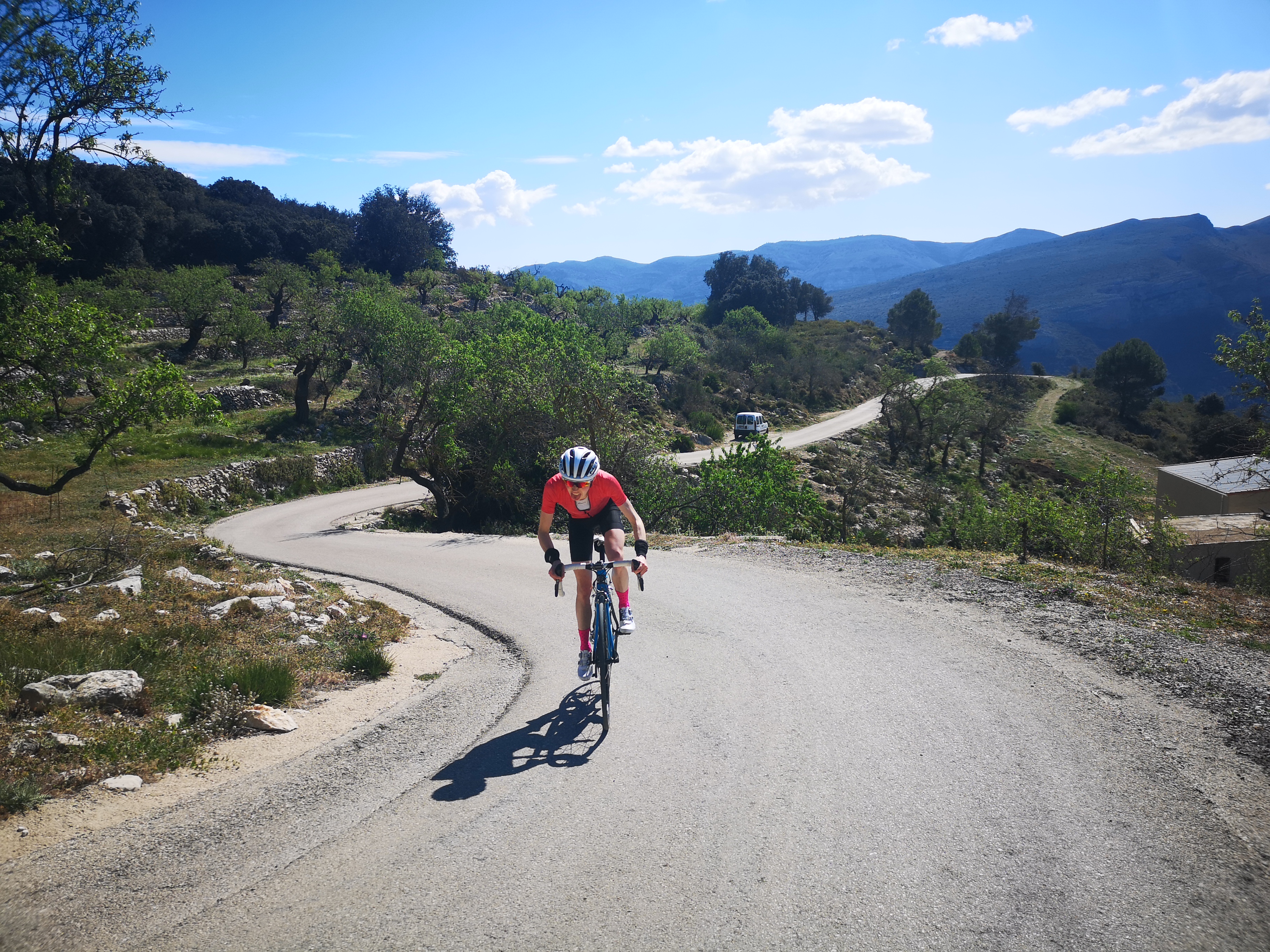
See the climb on Strava here (from Sagra)
See the climb on Strava here (from Castell de Castells)
At 10.8km long with a 6 per cent gradient, this ascent offers a vista which more than rewards the efforts put in as you snake your way to the tip of the climb.
You can ride from Sagra for an easier gradient over a longer distance, or start on the road between Benigembla and Castell de Castells for a shorter but steeper version. It's not signposted, but here's the climb.
It's worth leaving some gas in the tank on this one. Even taking the 'easier' side from Sagra, the first 8km average anywhere from 3 to 6 per cent - then the final stretch ramps up dramatically, averaging up to 9.4 per cent for each kilometre with ramps of 17 per cent.
Michelle Arthurs-Brennan the Editor of Cycling Weekly website. An NCTJ qualified traditional journalist by trade, Michelle began her career working for local newspapers. She's worked within the cycling industry since 2012, and joined the Cycling Weekly team in 2017, having previously been Editor at Total Women's Cycling. Prior to welcoming her first daughter in 2022, Michelle raced on the road, track, and in time trials, and still rides as much as she can - albeit a fair proportion indoors, for now.
Michelle is on maternity leave from April 2025 until spring 2026.
